The Calendar of the Yearly Festivals
068 068 Ube Shrine
Tottori City Kokufu Town Miyanoshita

Picture of the Kirin’s Head
Picture of the Shoujou’s Mask
| Date of the Festival | April-20, 21, and closest Sunday to April-21 |
|---|---|
| Time for the Kirin Dance at the Shrine | Eve of the festival: 8 p.m./ Festival day: 10 a.m. |
| Origin | Early Edo period (around 1650) |
| Characteristics | The shrine was established in 648 as the main shrine of Inaba province. The Kirin dance was designated as an Intangible Folk Cultural Property of Tottori Prefecture in 1959. |
| Area | Tottori City Kokufu Town Miyanoshita |
Introduction to the Shrine
Ube Shrine
It is said that the shrine was founded in Taika 4 (648). It was the only shrine in Tottori Prefecture with its name listed as "Myōjin Taisha" (high-ranking shrine) in the "Engishiki", a book of laws and customs compiled in 927.
■Deity of the Shrine
Takeshiuchi-no-sukune-no-Mikoto
■cultural property
[Kirin Dance]
Designated as a Tottori Prefecture Intangible Folk Cultural Property in 1959.
Designated as a National Important Intangible Folk Cultural Property in 2020.
[Forest on the Shrine Grounds]
Designated as a Tottori Prefecture Nature Reserve Forest in 1959.
[Full Set of Ritual Instruments]
Designated as a Tottori Prefecture Tangible Folk Cultural Property in 1964.
Access to the Shrine
Miyanoshita 651, Kokufu Town, Tottori City, Tottori Prefecture(MAP)
A three-minute walk from "Miyanoshita" bus stop on the Nakagawara Bus Line.
Related Information
Sites Associated with the Kirin Dances
Monuments around the Tottori Station
-
Wooden Benches
-
Sand Sculpture of Kirin
-
Stone Sculpture of Kirin
-
Tottori Toshogu in the Ouchidani Park
Tottori Toshogu was established by Mitsunaka Ikeda, a local lord, in the 17th century, and is a branch shrine of Nikko Toshogu. The shrine inherits the initial Kirin, which is now stored in the Tottori Prefectural Museum. During Gongen Matsuri, a festival in October, members of the Inaba Kirin Dance Club dance before the shrine’s deity, and a procession of a mikoshi (portable shrine) walks through to animate the festival.
-
The Imeitei Pioneer Memorial Gallery of Hamasaka
Imeitei is a gallery remodeled by Shichikamaya Yashiki (Shichikamaya Mansion) of the Mori family, who until lately ran a sake-brewery. It is a historical and folk gallery where visitors can trace the footsteps of the pioneers living around the Shin-onsen Town. The head of the Kirin from the Utsuno Shrine is displayed in the gallery. It is designated as the town’s cultural heritage.
-
Sora no Eki Park (Sky Station Park) at the Amarube Bridge
The origin of the Kirin from the Junisha Shrine, a shrine in adjacent to the Yoroi district, is the Kirin dance performed in the Iwami Town. This dance was a part of the inauguration of the Amarube Bridge at the end of the Meiji period. Visitors can see children’s drawings of the Kirin displayed in Sora no Eki at the Amarube Bridge and the park at the foot of the Amarube Crystal Tower. The roadside stations in vicinity are also worth sightseeing.



